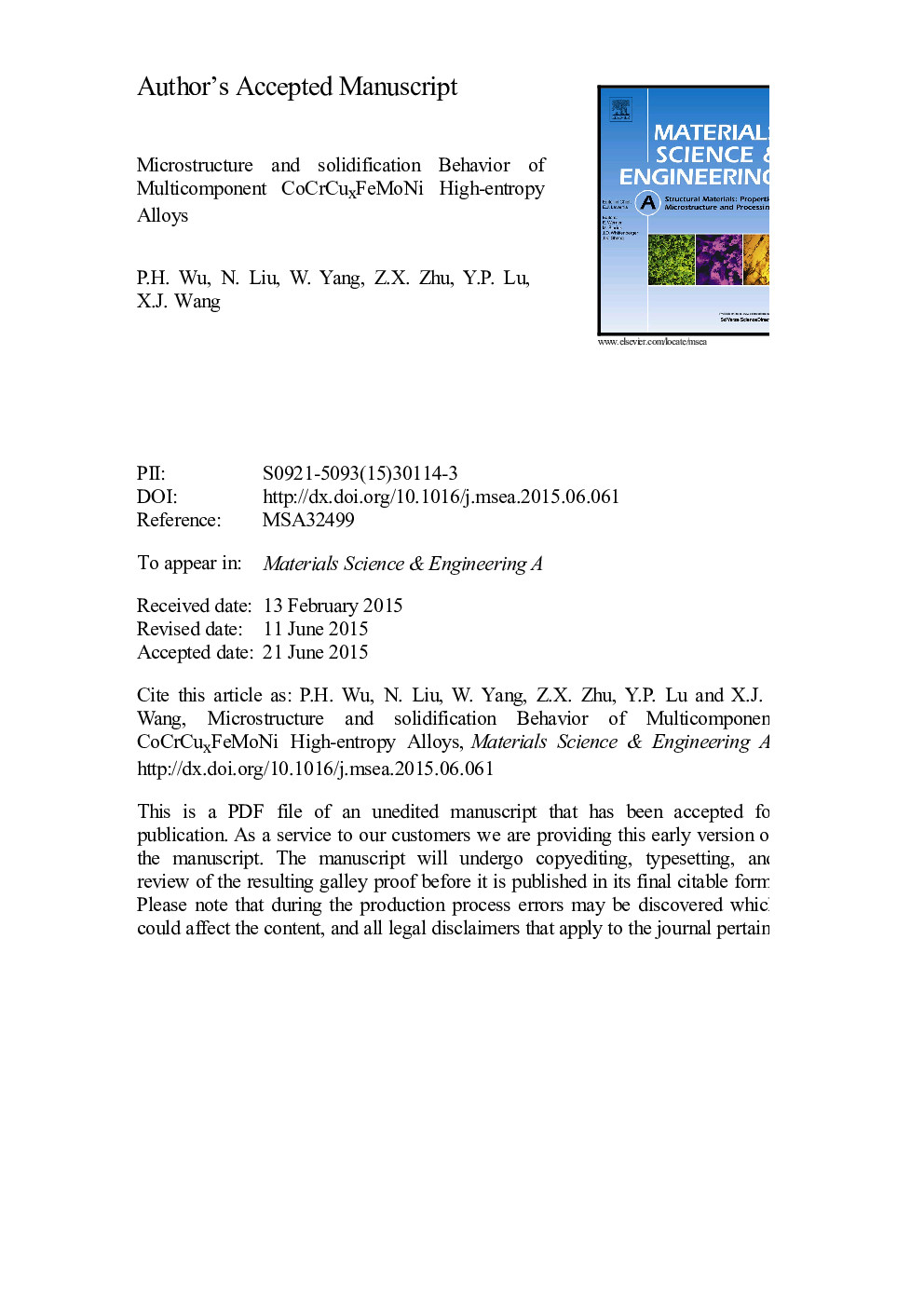| Article ID | Journal | Published Year | Pages | File Type |
|---|---|---|---|---|
| 7977229 | Materials Science and Engineering: A | 2015 | 33 Pages |
Abstract
(Fe, Co, Ni) rich dendrites nucleate primarily in CoCrFeMoNi and CoCrCu0.1FeMoNi alloys, followed by peritetic and eutectic reactions. The quasi-peritectic reaction occurs between the primary Mo-rich dendrites and liquids in the CoCrCu0.3FeMoNi melts, and transfers to a eutectic coupled-growth at the edge of the quasi-peritectic structure. Subsequently, eutectic reaction happens in the remnant liquids. Liquid-phase separations have occurred in CoCrCuxFeMoNi alloys when xâ¥0.5. Meanwhile, some nanoscale precipitates are obtained in the Cu-rich region. Two crystal structures, FCC and BCC, are identified in CoCrCuxFeMoNi high entropy alloys. Amazingly, a pretty high plastic strain (51.6%) is achieved in CoCrCu0.1FeMoNi alloy when the compressive strength reaches to 3012 Mpa. With the increase of Cu content, atomic size difference (ÎR) and electro-negativity difference (ÎX) decrease while valence electron concentration (VEC), mixing enthalpy (ÎH) and mixing entropy (ÎS) increase. Consequently, the valence electron concentration (VEC) values range for the formation of mixture of FCC and BCC structures can be enlarged to 6.87-8.35 based on the study of this paper. It is the positive enthalpies of mixing that causes the liquid-phase separation in CoCrCuxFeMoNi high entropy alloys.
Related Topics
Physical Sciences and Engineering
Materials Science
Materials Science (General)
Authors
P.H. Wu, N. Liu, W. Yang, Z.X. Zhu, Y.P. Lu, X.J. Wang,
